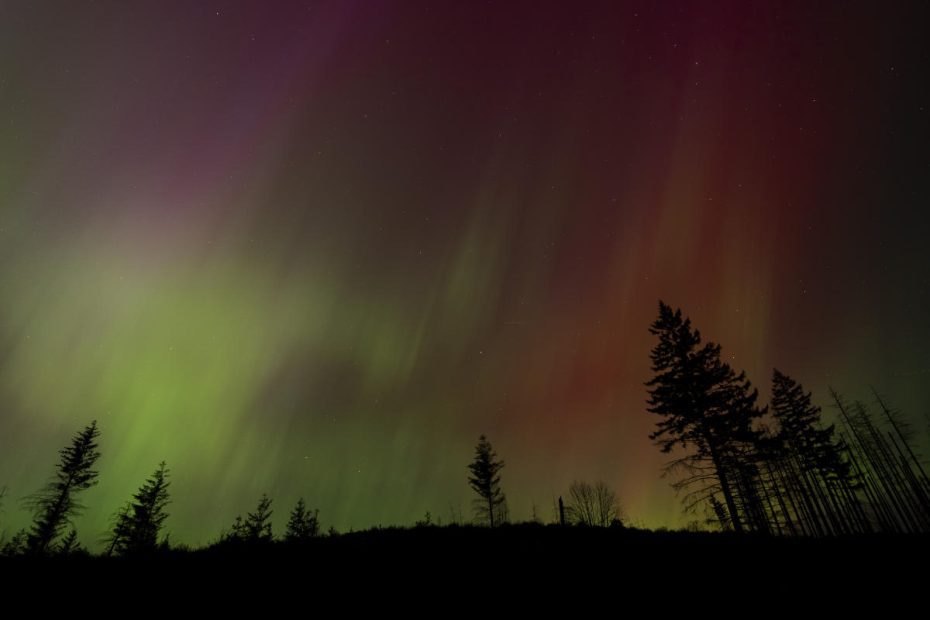Turn your gaze to the skies. Parts of the United States may get another chance to experience the Northern Lights this year — just in time to coincide with the Perseid meteor shower.
Solar activity could become so high that the aurora borealis could be visible across the country, according to a forecast released Friday by the National Oceanic and Atmospheric Administration's Space Weather Prediction Center.
The SWPC has also issued a geomagnetic storm warning for Friday through Sunday, suggesting that solar activity could disrupt the Earth's magnetic field in a way that could create conditions where the Northern Lights could be seen much further south than normal.
🌌 What is the Northern Lights? What causes them?
Also called the aurora borealis, the northern lights are a colorful, glowing pattern in the sky. They occur when charged particles from the sun hit Earth’s atmosphere and collide with gases, creating the vibrant display we see in the sky.
The Northern Lights were visible as early as May, when a geomagnetic storm allowed people in the United States as far south as Alabama to see the lights in all their colorful glory.
🗺️ Where you might see the Northern Lights
Normally, the Northern Lights are most visible in northern regions, as the Earth's magnetic field pushes charged particles from the sun toward the magnetic poles. Sometimes, however, solar activity is strong enough to make these awe-inspiring lights visible in parts of the continental United States.
If the geomagnetic storm is as strong as predicted, people in 15 states could potentially see the lights, the SWPC said.


Parts of Idaho, Montana, North Dakota, Minnesota, Wisconsin, Michigan, Wyoming, South Dakota, Iowa, New York, Vermont, New Hampshire and Maine should all have a view of the lights. Northeastern Oregon should also be able to see the lights.
While it is theoretically possible to see the lights in Washington, they may not be visible due to the recent smoke from the wildfires.
📱 What's the best way to see the Northern Lights?
The best way to see the Northern Lights is to find a dark place where there is no light pollution. Try to scan the sky around 10pm to 2am, when the sky is darkest.
You might be tempted to put your phone down to admire this amazing view, but this is one instance where you might want to capture the moment. The cameras on modern phones have long exposure times, which allow us to see light that is too dim for the human eye to pick up. So if you think you’re in a place where the lights should be visible, but you can’t quite see them in the sky, take a photo and see if you can spot some colors.
💫 This week you can also see the Perseid meteor shower
The Perseids are about to peak. You may catch a glimpse of the meteor shower and see up to 100 shooting stars per hour.
In the Northern Hemisphere, those hoping to see the swarm should head out between midnight and sunrise, giving their eyes 45 minutes to adjust to the darkness. Unlike the Northern Lights, you’re better off skipping your phone and stargazing without technology or bright lights.

